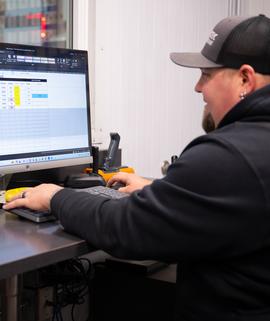
Tax season is right around the corner, and it’s time to take a deep dive into your dairy operation’s finances. While cash flow is essential, it’s only part of the bigger picture.
To truly understand your business’s financial health, you’ll need to analyze other key financial statements. Let’s explore the numbers that matter most.
Cash Flow: Is It Enough?
You’ve probably heard the phrase, “Cash is king.” It’s true. Cash is critical for covering daily expenses like feed, equipment, labor and crop inputs. But just because you have cash on hand doesn’t necessarily mean your business is profitable in the long term.
To get a clearer picture, take a closer look at your balance sheet and income statement. These financial documents provide insights that go beyond cash flow and help you evaluate the overall financial health of your dairy farm.
Balance Sheet
The balance sheet is a snapshot of the business at a particular point in time. To track progress effectively, we suggest updating it annually around the same time each year.
Balance sheets are divided into two columns.
1. Assets
What you own: cash, equipment, livestock and real estate.
2. Liabilities
What you owe: loans/debts
Each column is further categorized into:
- Current (short-term) – Assets like cash or liabilities due within 12 months
- Intermediate (mid-term) – Assets such as equipment and livestock with the corresponding liability associated with them
- Long-term – Real estate and corresponding long-term debt
Calculating Owner Equity
To determine your owner equity, or the amount of the business you own, add up the total assets and liabilities.
Ideally, the more of the business you own the better. A minimum of 50% owner equity should be the goal. Unless major investments like purchasing land or expanding your operation are made, owner equity should grow each year.
Measuring Liquidity: Can You Meet Your Short-Term Obligations?
Liquidity measures your ability to cover financial obligations without disrupting normal operations. A critical liquidity metric is working capital, which you can calculate by subtracting current liabilities from current assets.
- Positive working capital with a 25% cushion is ideal.
- Negative working capital indicates potential cash shortfalls in the months ahead.
Working capital is a measure of the farm’s ability to meet short term liabilities, something most lenders pay close attention to.

Analyzing the Income Statement
The income statement outlines your farm’s income and expenses over a specific period. Two important ratios to monitor are the operating expense ratio and the interest expense ratio.
Operating Expense Ratio
This ratio shows how efficiently your farm covers its operating expenses. To calculate it:
- Add up expenses such as rent, wages, utilities and leases (excluding interest and taxes).
- Divide that total by total revenue.
For dairy farms, we like to see a number in the 70% range. If operating expenses get too high, there will not be enough money left for other costs.
Repayment Capacity
Repayment capacity measures how much of your gross income is needed to cover debt payments. To calculate it:
- Add your total annual principal payment, scheduled interest payments and any capital lease payments.
- Divide the total by gross farm income.
- Multiply by 100 to express it as a percentage.
This will tell us the percentage of gross farm income needed to pay debt in the next 12 months. A gross farm income of 15% is ideal.
If your operating expense ratio and debt payments together exceed 100% of your gross income, you’ll likely struggle to meet your financial commitments.
If they’re less than 100%, the difference will be what is left over for taxes, off farm investments such as retirement accounts and dollars to reinvest back into the business.
Interest Expense Ratio: Keep It Low
The interest expense ratio is a key indicator of how much revenue is used to service debt. Calculate it by dividing total interest paid by total revenue.
From a dairy farm perspective, the lower the better. A 6% range is considered ok, but anything higher than that, cash could be tight.
Conclusion: Take Control of Your Finances
These financial measures provide valuable insights into your dairy farm’s financial health, helping you make more informed decisions.
If you need assistance preparing for tax season or want to review your financials, reach out to your Compeer Financial lending officer. Our team of dairy industry experts is here to support you and help improve your farm’s operations.








